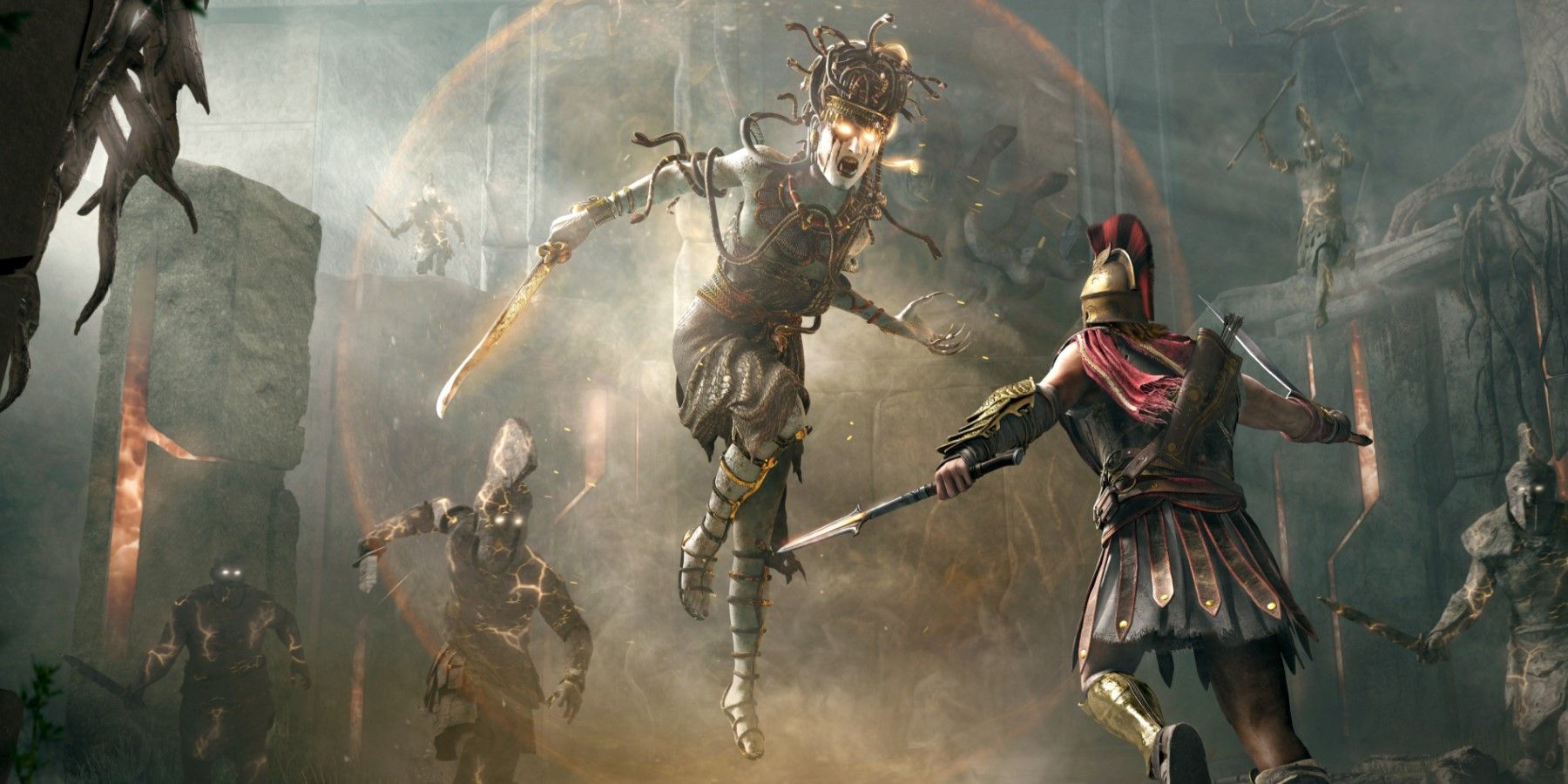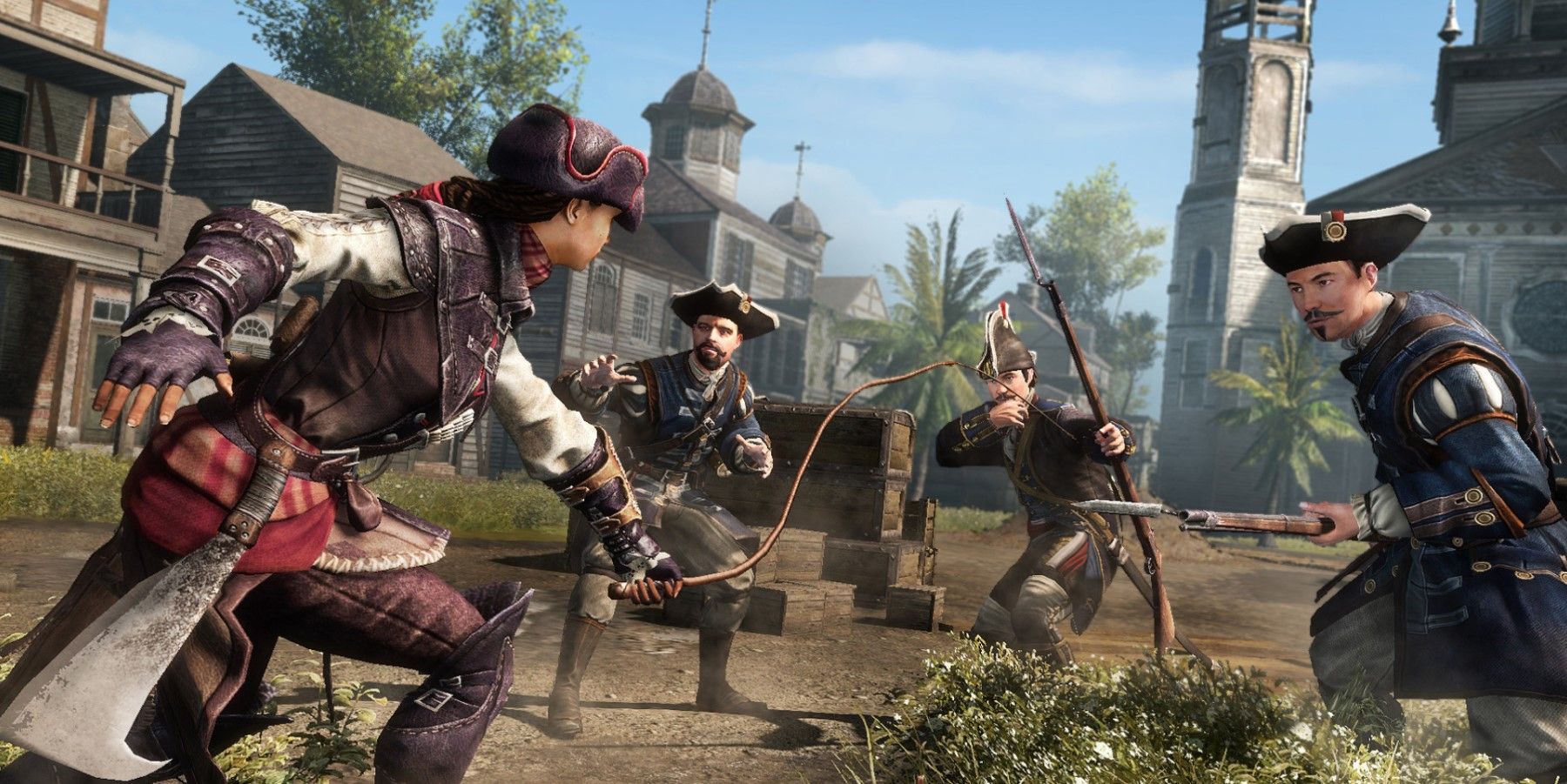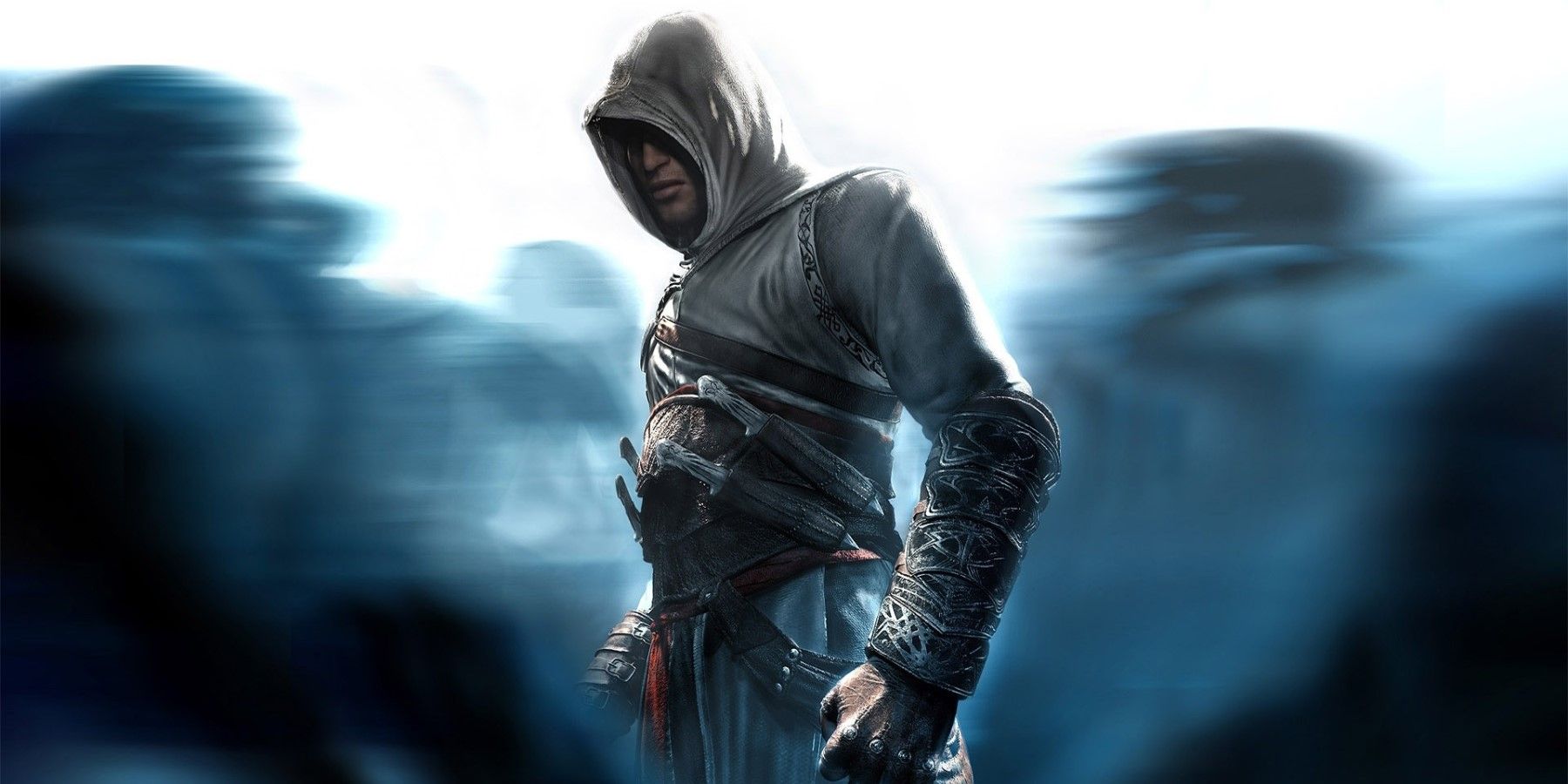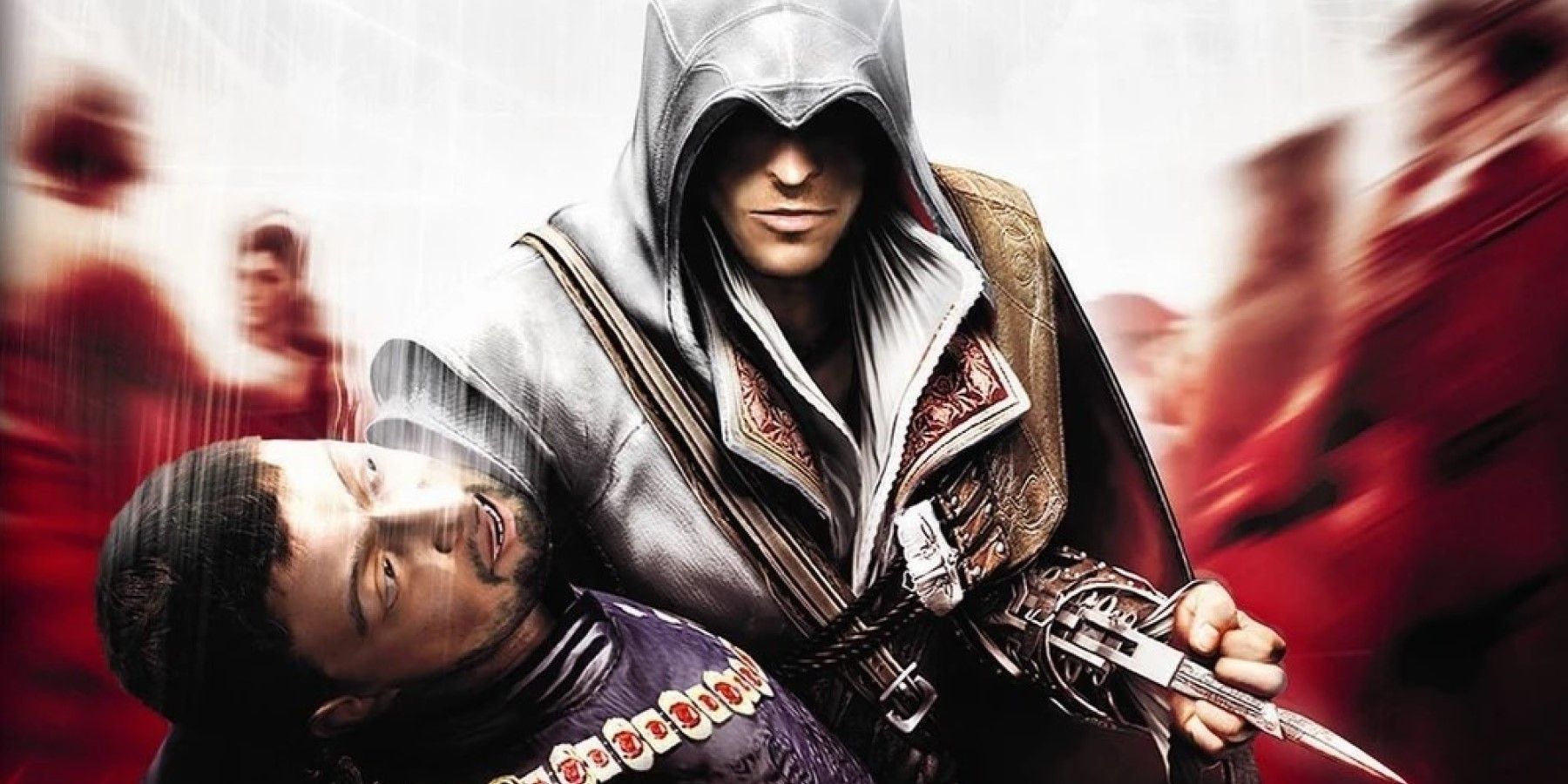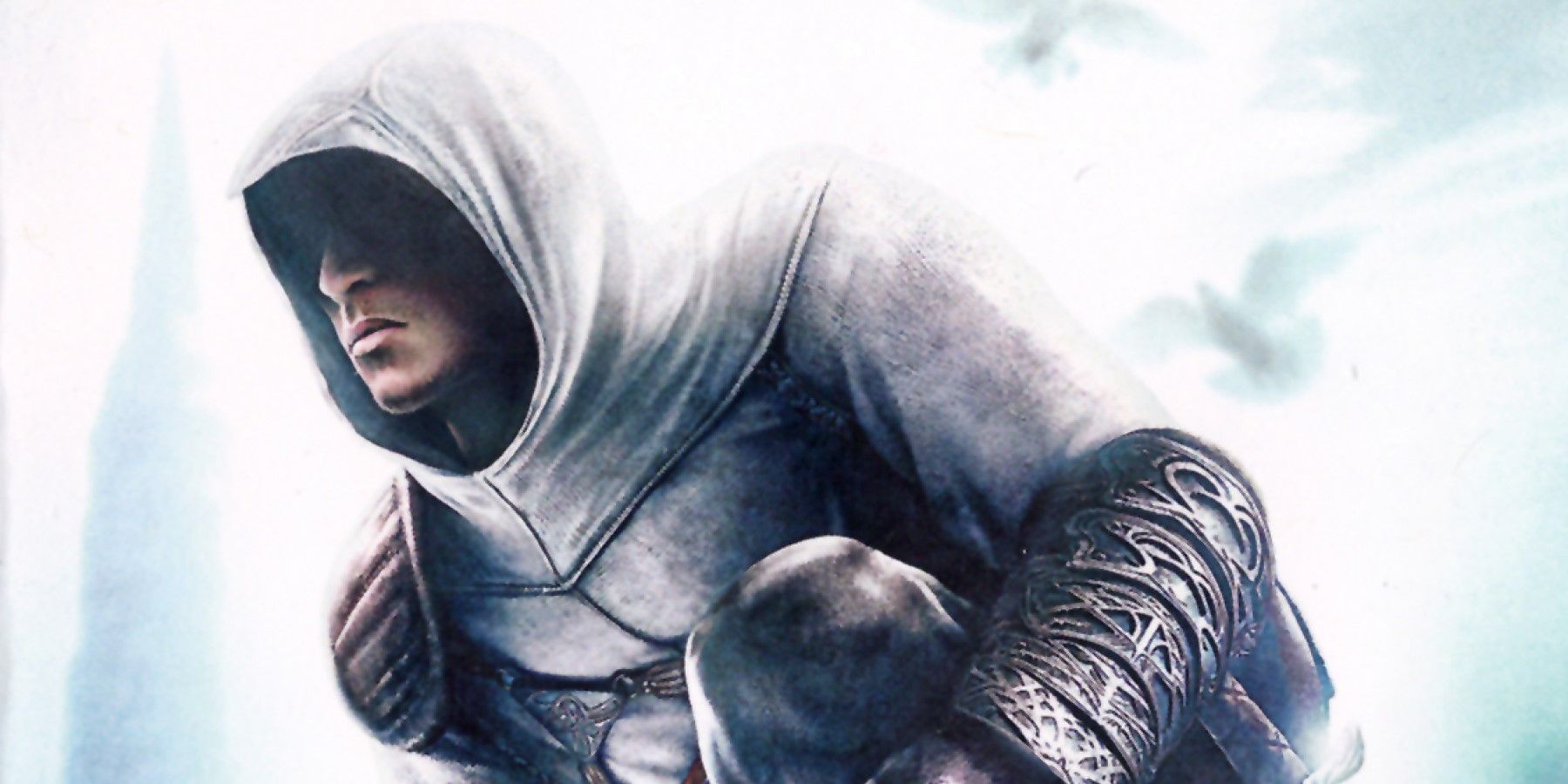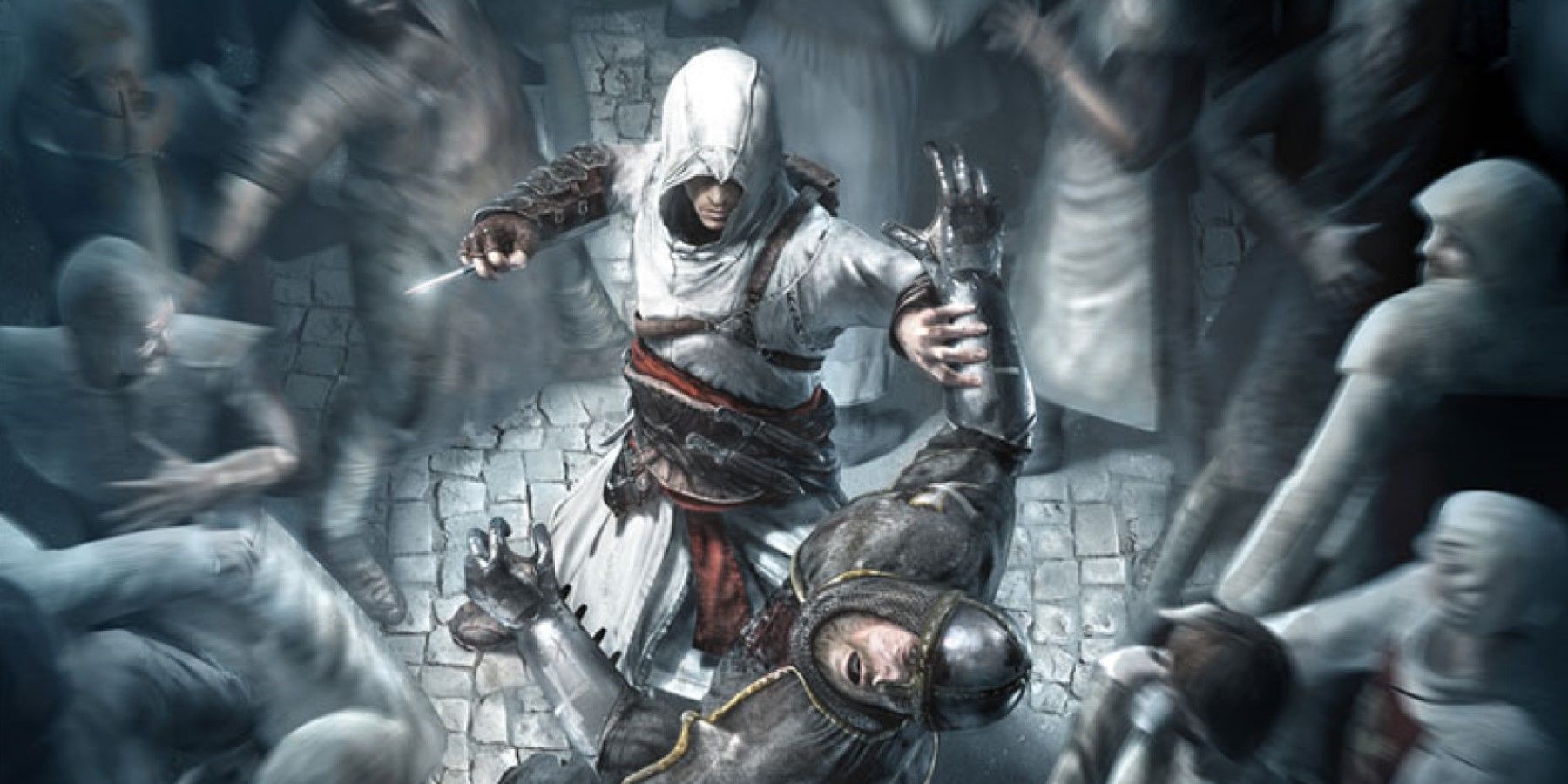Key Takeaways
- Assassin’s Creed games have evolved, but older titles suffer from clunky mechanics and artificial difficulty.
- The Assassin’s Creed series can be split between pre-& post-Odyssey installments, impacting gameplay & combat.
- Spin-off titles like Assassin’s Creed: Bloodlines & Altair’s Chronicles are hard to play due to outdated mechanics.
While still a relatively young franchise in the history of the video game industry, at not even 20 years old, the Assassin’s Creed franchise has evolved and adapted into one of the industry’s most successful properties. As a result, some of its older and more experimental titles have become incredibly unfriendly for new players to pick up and play.
From fledgling installments and genre-diverting titles to side-projects for the expansion of the property, the series’ fluid movement has stumbled on more than one occasion.
Note: As this article revolves around Assassin’s Creed titles that are difficult to play in a modern context, games that were considered ‘bad’ at the time of release will not be considered.
6 Assassin’s Creed: Odyssey
Spongey Enemies Force Players To Grind Or Pay For Progress
The Assassin’s Creed series can be roughly split by fans into two distinct eras – installments from before Assassin’s Creed Odyssey‘s 2018 release, and those before. Unfortunately for players wishing to play through Ubisoft’s age-old conflict between Templars and Assassins, the company’s venture from a more focused narrative experience to that of a role-playing game had far-reaching effects on gameplay and combat.
While Odyssey‘s Grecian narrative and beautifully rendered classical locales make the title worth enjoying from afar, many players bemoaned the company’s artificial tweaking of combat difficulty to encourage microtransaction purchases. As a result, many enemy characters – from seeming underlings to god-like bosses often railroad players into an unenjoyable grinding slog of a gameplay loop.
5 Assassin’s Creed III: Liberation
A Return To Colonial America Brings With It Some Archaic Design
While many Assassin’s Creed titles can be compartmentalized as either a main series title or a spin-off, Assassin’s Creed III: Liberation’s portable-turned-console release exists in the shady landscape in between.
Initially launching on Sony’s ill-fated PlayStation Vita portable console in 2012 before being ported to home consoles in 2013, the title carries forward the limitations of its host installment and implements some new ones due to its skewed launch. The limitations of its initial portable home shrink the title’s scope, and Assassin’s Creed III‘s less impactful combat and free-running make for an Assassin’s Creed game that – while narratively and mechanically progressive – is mightily awkward to pick up and play today.
4 Assassin’s Creed
Its Efforts Are The Foundation Of The Series, But Have Aged Poorly
A debt of gratitude from all Assassin’s Creed fans, and open-world enthusiasts, is owed to Ubisoft’s first foray into the series. 2007’s Assassin’s Creed laid the framework for all successive Assassin’s Creed titles; from hidden blades, hooded figures, and the historical setting.
However, with successive titles came interactive improvements to the tried-and-tested formula. While the original Assassin’s Creed brought the conflict between the Templars and Assassins to players for the first time, the mission design and open world of the Holy Land are somewhat stale by modern standards. Beyond these hindrances, even the quintessential free-running, building-scaling, and assassinations the series has become synonymous with are uncharacteristically clunky in the franchise’s inaugural title.
3 Assassin’s Creed II: Discovery
A 2.5D Action-Platformer Crammed Onto Mobile & DS Screens
- Released: November 17, 2009
- Developer: Griptonite Games
- Platform(s): iOS, Nintendo DS
- Genre: Action-Platformer
While the Assassin’s Creed series has jumped from Ptolemaic Egypt to Victorian London, and introduced gamers to the virtual likenesses of Leonardo da Vinci and Benjamin Franklin, there are a few intrinsic threads that follow almost every title in the franchise. Those threads being that they are third-person action-stealth titles with open worlds set in real-life historical locales.
However, with Griptonite Games’ Nintendo DS and iOS release of Assassin’s Creed II: Discovery in 2009, Assassin’s Creed fans were met with an incredibly competent 2D action platformer that concentrates its gameplay within condensed stages. While the title itself is a palatable portable Assassin’s Creed installment following fan-favorite protagonist Ezio Auditore de Firenze, the cramped screen size and restricted control of the title make for a spin-off that is difficult to pick up and play today.
2 Assassin’s Creed: Bloodlines
A Continuation Of The Original Title’s Clunky Movement On A Portable Console
While the praise and accolades bestowed on the original Assassin’s Creed title are more than well-earned, the title has increasingly shown its age as its 2007 release gets ever-smaller in the industry’s rearview mirror.
As a result, Assassin’s Creed: Bloodlines is a competent portable take on the groundwork that Assassin’s Creed‘s inaugural title laid out. However, the concessions made for its performance on a portable console alongside its source’s already clunky movement and combat, make for a title that is incredibly difficult to play by modern standards.
1 Assassin’s Creed: Altair’s Chronicles
Floaty Controls & A Closed-Off Game World In The Series’ First Spin-Off
As the first spin-off title in a multimedia franchise as successful and renowned as Assassin’s Creed, Assassin’s Creed: Altair’s Chronicles had to prove its worth.
As a result, despite its somewhat faithful portable rendition of the Assassin’s Creed formula established only one year earlier, Altair’s Chronicles‘ potential is suppressed. Firstly by its containment on low-power handhelds like the Nintendo DS and mobile devices, and secondly by its slavish adherence to the already clunky combat and movement of the series’ inaugural title. While the released product is an impressive technical showcase, being a 3D third-person title running on DS hardware, playing the title nowadays can be unnecessarily frustrating.


